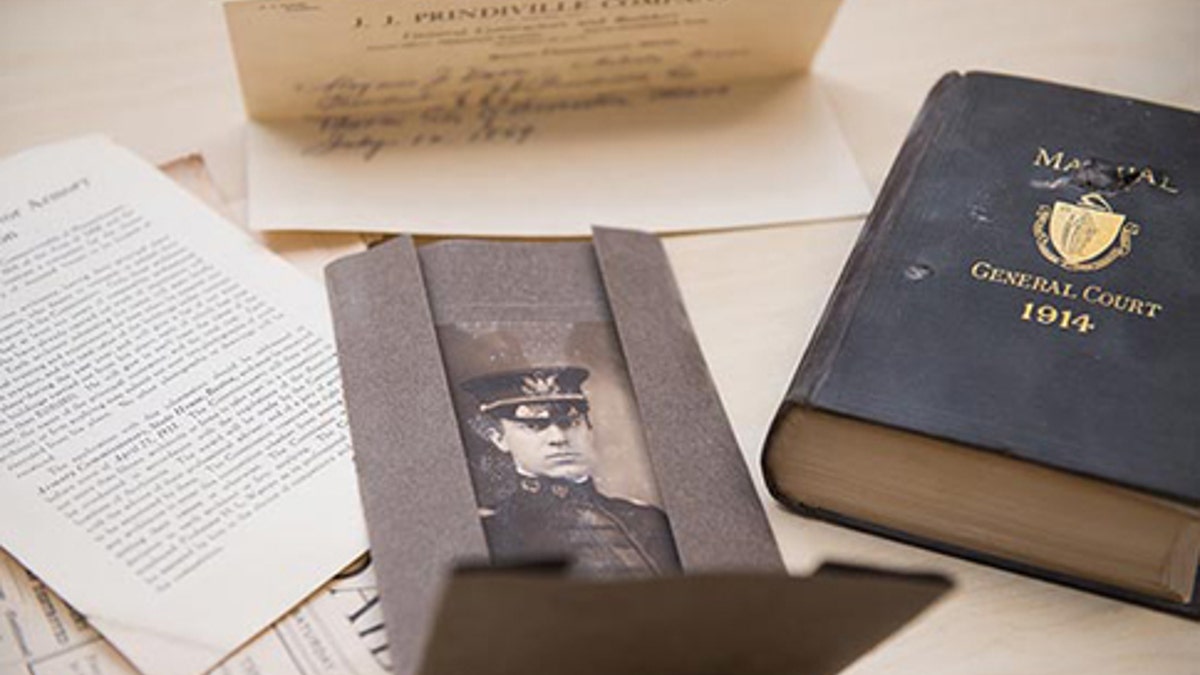
Adam Mumford (CAS’18) and Emma Purtell (CGS’17, COM’19) with the time capsule found in one of the hundreds of boxes of files they were archiving for BU’s Facilities Management & Planning. Photo by Cydney Scott (© 2017 Boston University all rights reserved)
Three Boston University students have found a time capsule dating back over 100 years, filled with a number of artifacts, including a 102-year old newspaper.
Emma Purtell, Sarah Mankey, and Adam Mumford uncovered the time capsule after sorting through a number of boxes filled with files at their summer job at BU’s Facilities Management & Planning (FM&P). Sorting through the loads of paperwork, they saw that a copper container the size of a toaster was nestled inside one of the boxes.
“The first thing I thought was, it’s a time capsule,” Purtell told BU Today. The time capsule dates back to June 1915, when construction began on the Commonwealth Armory, a Massachusetts Army National Guard armory.
WRECKAGE OF LOST WWII BOMBER DISCOVERED IN NORTH SEA
The box had apparently been unearthed in 2002, when the armory was being demolsihed to make way for BU's John Hancock Student Village complex, but had been forgotten about for the next 15 years.
Inside the capsule were a number of different items: a copy of the Manual of the Massachusetts General Court from 1914, a 1915 copy of the Boston Daily Advertiser newspaper, several coins, including an 1894 quarter, a map of the then-new MTA subway to Harvard Square, a document that appears to be a request for proposals for the construction of the armory, and photos of dignitaries connected to the project.

(© 2017 Boston University all rights reserved)
In addition, Purtell and the others found rosters of the Massachusetts Volunteer Militia, Battery A, First Battalion, whose home base was the armory, and a Boston Past and Present photobook.
“I’m just blown away by how good the condition of some of this stuff is, considering it’s 100-plus years old at this point,” Mumford told BU Today.
ARCHAEOLOGISTS UNCOVER THE LOST ROYAL PALACE OF HENRY VIII
The University is now contacting the National Guard about how to properly dispose of the time capsule and the contents inside.
“It’s really rewarding, because we found this near the end of our project,” Purtell said. “And at the beginning of project, we thought, there’s no way we can get this done. There are so many boxes—how are we ever going to get through them?”
“One of the people in the office said this was like the cherry on top,” Mumford said. “The reward for all the hard work was finding this historical treasure trove.”




















